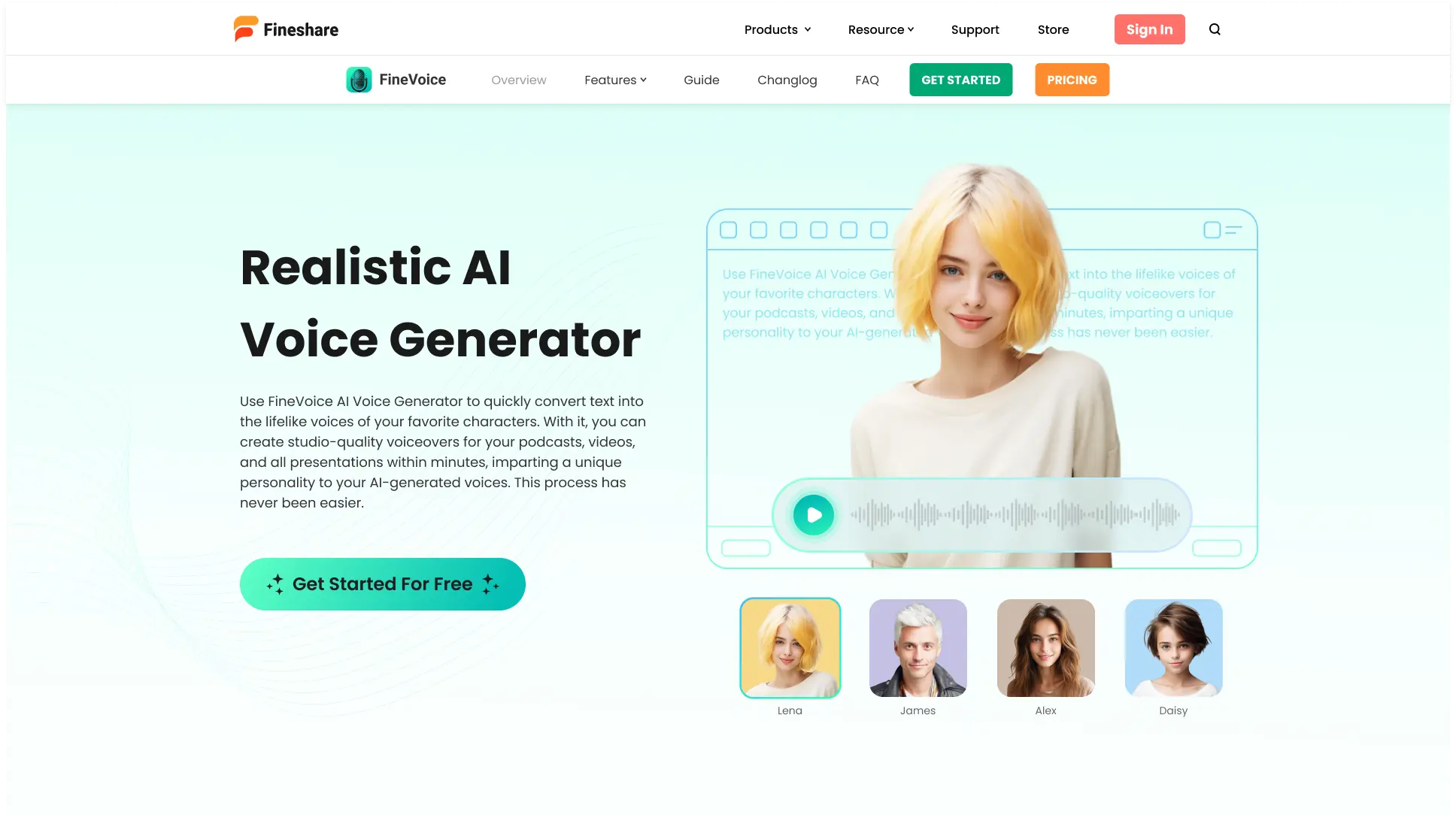AI voice generators are revolutionizing how we interact with technology. From realistic text-to-speech conversions to sophisticated voice cloning, these tools are transforming industries and offering exciting new possibilities. This guide explores the technology behind AI voice generation, its applications, ethical considerations, and future potential.
We’ll delve into the different types of AI voice generators, examining the algorithms and techniques that power them. We’ll also discuss the crucial role of natural language processing (NLP) in enhancing the naturalness and accuracy of synthetic speech. Finally, we’ll explore the ethical implications and societal impact of this rapidly evolving technology, including potential biases and the need for responsible development and use.
AI Voice Generators: A Deep Dive

AI voice generators are transforming how we interact with technology and each other. This technology, capable of producing incredibly realistic synthetic speech, has far-reaching implications across various industries and aspects of daily life. This article will explore the core functionalities, technical underpinnings, ethical considerations, future trends, and illustrative examples of AI voice generation.
Defining AI Voice Generators

AI voice generation technology uses artificial intelligence to create synthetic speech. Its core functionality involves converting text or other data into human-like audio. This involves complex processes that mimic the human vocal tract and speech patterns.
Several types of AI voice generators exist, each with unique capabilities:
- Text-to-Speech (TTS): This is the most common type, converting written text directly into spoken audio. Many TTS systems offer various voices, accents, and styles.
- Voice Cloning: This advanced technique creates a synthetic voice that closely mimics a specific person’s voice, using a relatively small sample of their speech. This has significant applications in entertainment and personalized experiences.
- Voice Conversion: This changes the characteristics of an existing voice, such as pitch, tone, and accent, without needing to clone the entire voice.
Real-world applications of AI voice generators include virtual assistants (like Siri and Alexa), audiobooks, video game characters, accessibility tools for visually impaired individuals, and personalized learning experiences.
Technical Aspects of AI Voice Generation
Creating realistic synthetic voices involves sophisticated algorithms and models. Two primary speech synthesis techniques are commonly used:
- Concatenative Synthesis: This method stitches together pre-recorded speech segments to form complete sentences. While relatively simple, it can sound unnatural if the segments don’t blend seamlessly.
- Parametric Synthesis: This approach models the human vocal tract and generates speech directly from parameters that define the sound. This often results in more natural-sounding speech, but it requires more computational power.
Natural Language Processing (NLP) plays a crucial role in improving the output of AI voice generators. NLP algorithms ensure the generated speech is grammatically correct, contextually appropriate, and emotionally consistent with the input text.
| Platform Name | Strengths | Weaknesses | Pricing |
|---|---|---|---|
| Amazon Polly | Wide range of voices, easy integration with AWS services, high quality | Can be expensive for large-scale use | Pay-as-you-go |
| Google Cloud Text-to-Speech | High-quality voices, multiple languages supported, good documentation | Limited customization options compared to some competitors | Pay-as-you-go |
| Microsoft Azure Text-to-Speech | Excellent natural language processing, good integration with other Microsoft services | Can be less intuitive to set up than some other platforms | Pay-as-you-go |
| ElevenLabs | Focus on high-quality and expressive voices, strong community support | Relatively new platform, fewer voice options than some established providers | Subscription based |
Ethical Considerations and Societal Impact
The power of AI voice generation brings ethical concerns. The potential for misuse is significant:
- Deepfakes: AI voice cloning can be used to create convincing audio deepfakes, which can be used for fraud, misinformation, or political manipulation.
- Impersonation: Synthetic voices can be used to impersonate individuals, potentially leading to identity theft or other crimes.
Bias in datasets used to train AI voice generators can perpetuate and amplify existing societal biases in the generated speech. Legal and regulatory frameworks are still developing to address the challenges posed by this technology.
Ethical guidelines for developers and users are crucial. These should include:
- Transparency about the use of AI-generated voices.
- Measures to prevent misuse and malicious applications.
- Addressing bias in datasets and algorithms.
- Respect for intellectual property rights.
Future Trends and Developments in AI Voice Generation, Ai voice generator
Advancements in AI are poised to significantly improve AI voice generation. We can anticipate:
- More natural and expressive voices: Future systems will likely generate speech that is indistinguishable from human speech.
- Improved emotional intelligence: AI voice generators will better convey emotions and nuances in tone.
- Real-time translation and adaptation: AI will enable seamless translation and adaptation of speech to different languages and contexts.
New applications will emerge in areas like personalized medicine (creating synthetic voices for patients with speech impairments), immersive gaming, and advanced customer service interactions. The impact on voice acting and related professions will require careful consideration and adaptation.
A potential timeline for key milestones:
- 2024-2026: Widespread adoption of high-quality, expressive AI voices in various applications.
- 2027-2029: Development of AI voices capable of real-time emotional adaptation and nuanced expression.
- 2030 onwards: Integration of AI voice generation with other advanced technologies, such as augmented reality and virtual reality, leading to truly immersive experiences.
Illustrative Examples of AI Voice Generation
Imagine interacting with a virtual assistant. You ask, “What’s the weather like today?” The AI assistant, using a pleasant, clear voice, responds, “It’s sunny with a high of 75 degrees Fahrenheit, and a low of 60 degrees tonight. Don’t forget your sunglasses!” The response is natural and informative, demonstrating the power of seamless human-computer interaction.
In education, AI voice generators can create personalized learning experiences. Textbooks could be read aloud in different voices, catering to various learning styles and preferences. Students could receive personalized feedback and tutoring in a natural-sounding voice.
AI voice generators are pretty cool; you can create realistic-sounding voices for all sorts of applications. Imagine using one to narrate news stories, like what happened to Rep. Virginia Foxx, who was unfortunately injured outside the House chamber in the Capitol building, as reported here: Rep. Virginia Foxx injured outside House chamber in Capitol building. Thinking about it, AI could even be used to create a synthesized voice for official statements following such an incident.
For individuals with disabilities, AI voice generators can enhance accessibility. Screen readers could use more expressive and natural-sounding voices, improving the user experience. People with speech impairments could use AI to communicate more effectively.
AI voice generators are awesome for creating custom audio, right? You could even use one to narrate a hype video for the Nipissing Lakers women’s hockey team has high hopes for the upcoming season! Imagine the possibilities – pumping up the crowd with a digitally enhanced announcer’s voice. Then, after the game, use the AI to generate post-game interviews.
Pretty cool, huh?
Ending Remarks: Ai Voice Generator

AI voice generators are rapidly advancing, promising a future where human-computer interaction is more seamless and intuitive than ever before. While ethical considerations and potential misuse must be addressed, the potential benefits across various sectors – from education and accessibility to entertainment and customer service – are undeniable. As the technology continues to mature, we can expect even more innovative and impactful applications to emerge.
FAQs
What are the best AI voice generator platforms for beginners?
Several platforms offer user-friendly interfaces, such as Murf.ai and Descript. Consider your budget and specific needs when choosing.
How much does it cost to use an AI voice generator?
Pricing varies widely depending on the platform and features. Some offer free tiers with limitations, while others charge based on usage or subscription.
Can I use an AI voice generator for commercial purposes?
Always check the platform’s terms of service. Many allow commercial use, but some may require additional licenses or fees.
AI voice generators are pretty cool, right? They can create realistic voices for all sorts of applications. Think about how you could use one to narrate a documentary, like this amazing profile of Luke Littler: the mind and the making of darts’ youngest world Luke Littler: the mind and the making of darts’ youngest world , imagine the possibilities! The AI could even mimic Luke’s voice if you had enough samples.
The future of voice technology is definitely something to keep an eye on.
Are AI-generated voices easily detectable?
The detection of AI-generated voices is an ongoing area of research. While some advanced techniques are becoming more sophisticated, many AI voices are still discernible with careful listening.
